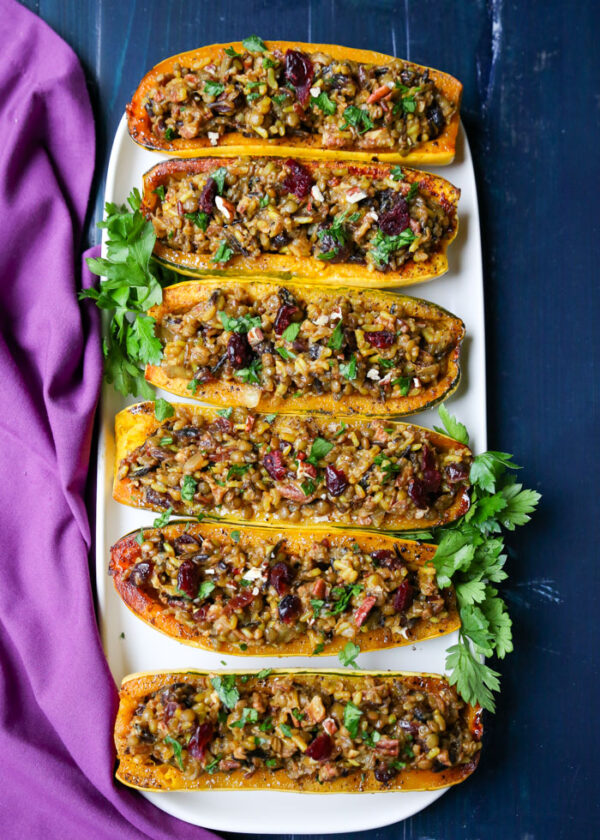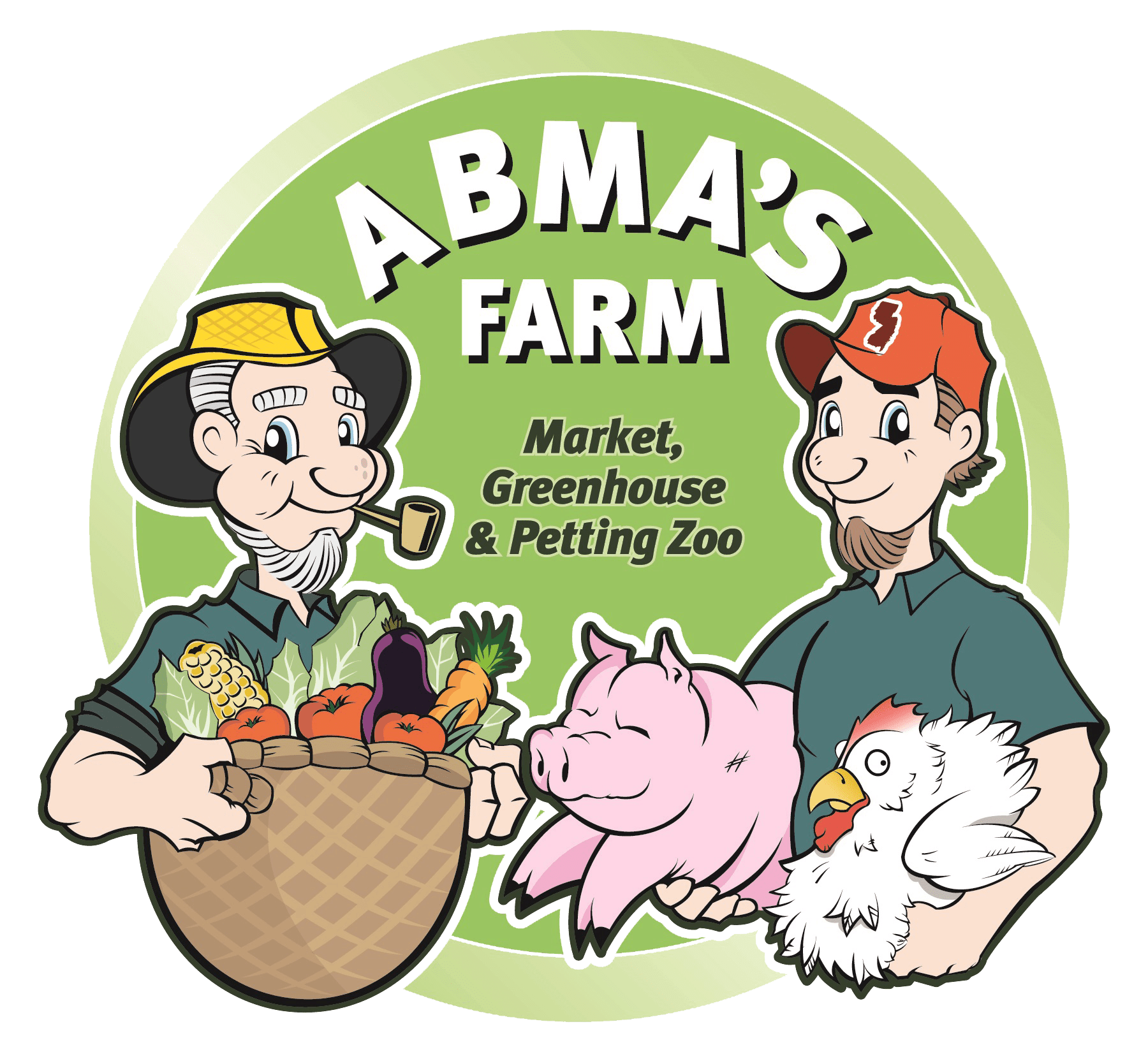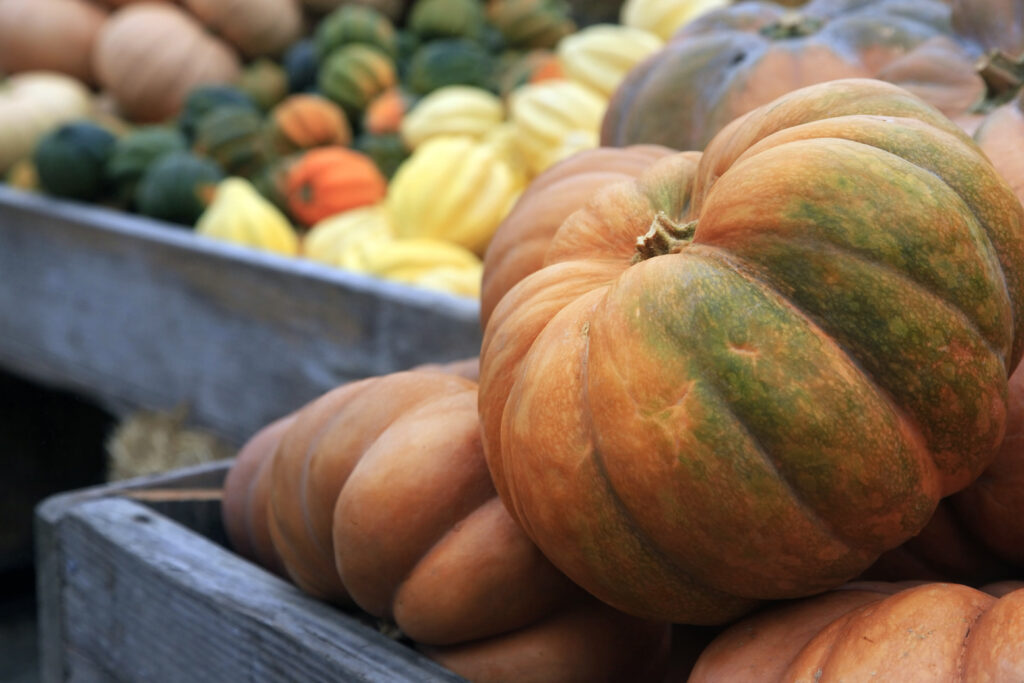The World of Pumpkins, Squash, and Gourds
Fall at Abma’s is a magical time of year. It’s when people from near and far visit the farm for hayrides, pumpkin picking, and to stock up on holiday goodies from the Farm Market and Greenhouse. Mums, celosia and flowering kale dot the gorgeous 32-acre landscape in festive hues of maroon, purple, gold, and green; so a visit from September through November is always a memorable experience!
During the Fall we are known for our pumpkins, gourds, and a host of other squash. At every turn and corner, giant crates of orange, amber and rust showcase winter squashes and gourds in almost every size, shape and variety. So, if you’re into harvest decor, autumnal cooking, or a bit of both, you will love visiting our farm in fall.
If you are wondering what’s the best way to use these festive members of the Cucurbitaceae family, look no further! The main difference between squash (includes pumpkins) and gourds is that squash is grown and harvested to eat while gourds are grown and cultivated for decoration purposes.
The first squash is said to have been planted in Mexico about 10,000 years ago! Native Americans harvested them too. The word “squash” comes from the Native American Narragansett tribe of Rhode Island; “askutasquash” means “eaten raw or uncooked”.
This family of vegetables served many purposes for the natives then as it does now. The soft flesh of pumpkin and squash is both nutritious and delicious and the outer shell can be dried to make bowls and even utensils.
Gourd decorating is a serious craft for ornament making, bird houses, and planters for succulents. If drying and sealing gourds is not your favorite thing to do, stop by our greenhouses for our colorful creations. Or keep the gourds whole and display them together with mums, hay bales, and cornstalks.
Winter squash and gourds are summer vegetables. This may sound confusing, but it means that they depend on the summer months to grow. They are heartier and have longer growing seasons than their cousins, the Summer squash (zucchini). They’re worth all the effort though. Winter squash are loaded with nutrients! Especially beta carotene and Vitamin C, Magnesium, Potassium, and heart supporting fiber. Different from summer squash, winter varieties have tougher outer skins. But worry not: most winter squash can be eaten with their peels intact!
With all the focus on introducing textural interests to meals and with a growing curiosity around cooking and serving squash, if you’ve never had squash before, start with Acorn and Carnival varieties first! These smaller squash are easy to handle and can be enjoyed cut into wedges, drizzled with olive oil, salt and pepper, and baked until soft. Some people like to add a little bit of brown sugar for caramelized sweetness. Think outside the box by adding roast veggies and quinoa to your acorn or carnival squash dish.
Did you know that early Colonists depended on these fall vegetables to get through the winter months? As alluded to in recipes published as early as the 1700s, cooking soup in Colonial times was commonplace. Colonial families cooked food in large pots in the hearth of the home and in batches large enough to feed the whole family. Nothing goes better together than squash and soup. Warm, hardy, and wholesome, you’ll soon find out that cooking or roasting squash makes the perfect base for any culinary soup medley. In fact, the Greenwich Historical Society website features an interesting recipe for “Pattypan Soup.” A soup traditionally made by pilgrims with an heirloom squash that is white and shaped like a UFO.
We highly recommend our Pumpkin soup and Butternut Squash soup, customer favorites made right here in our kitchen and slow cooked to perfection. Pumpkin and Butternut Squash contain a stronger natural sweetness that works very well in soup.
Other varieties of winter squash, not as well known but carried here at the farm are the Kabocha and Delicata squash. Kabocha originated in Japan, with a dark green peel and rounded edges whereas Delicata is longer, cylindrical with marked green and off-white striations. These are great if you’re feeling adventurous because Kabocha can be dredged in a tempura batter and fried for an Asian flare. Delicata on the other hand has been nicknamed “sweet potato squash.” Creamy and velvety, Delicata caramelizes naturally during baking and because this squash variety tastes better with the peel, we recommend deseeding, baking and elevating it with a stuffing: rice and lentils, chicken and mushrooms, farro with roasted nuts or any other filling that celebrates a sweet and savory combination do perfectly.
Spaghetti squash is a perfect stand-in for a carbohydrate friendly alternative to any meatball and pasta dinner. For longer spaghetti-like strings, cut the squash down the middle so you have two cylindrical halves. Slice into 1-inch thick rings, then roast for 30 mins at 425F. Spaghetti squash is a chef favorite here at Abma’s. Head chef Tee says the sky’s the limit with this squash and offers full proof suggestions to display its versatility. Eat it with a little bit of olive oil and parmesan cheese or mix it with egg, ricotta cheese, salt and marinara. Place back in the skin, top with mozzarella and cook in the oven for a few minutes until the cheese melts for a delicious meal and gorgeous display.
What about the Fall favorite, pumpkin? A walk through Abma’s farm market will give you every indication that we take Pumpkin season seriously! Pumpkin scented candles and stamped tea towels line our shelves at the gift shop. Find pumpkin bread, pumpkin cake, and our specialty Pumpkin dip, freshly prepared in our kitchen. Our popular Pumpkin pie captures all the flavors of fall like cinnamon, allspice and ginger. The most sought after treat this time of year is our pumpkin cheesecake- made in a brownie crust pie. This decadent, delicious and seasonal dessert is a show stopper no matter where and when presented.
Pumpkins are truly an exceptional creation of nature. Not only are all parts of the pumpkin edible including the seed, but they preserve quite well and so have good ornamental value. Fall is a “harbinger” season and home decorating around the United States reflects the bounty of the months preceding this time. It is also a time of year that is ripe with gratitude and Thanksgiving. We carry large varieties of Pumpkins in advance of Halloween, another huge fall celebration for pumpkin carving which is very popular this time of year. Most, if not every home in the US will showcase their skills with spooky figurines carved into pumpkins that sparkle with tea lights during October evenings. Pumpkins are prominent indoor home decor items as well. Specialty miniature pumpkins like Baby Bell fit snugly in bowls for foyer tables and mantle decorations. Slightly bigger Autumn Golds pair well with candles for a harvest theme table scape. Mix and match your pumpkins for your coffee table with the flatter Aspen and the wider Buckskin distinct with wedges. If your personal style leans more towards minimalistic as opposed to ornate, you can choose our Casper, Luman and Snowball varieties. True to their namesake, they are all white in color and can even be used for painting.
As a general guideline remember to never pick up your pumpkin by the stem as it is fragile and can break easily. A pumpkin that has fallen can bruise, leaving it susceptible to spoiling. Thinner skin pumpkins are best for carving and can be distinguished by comparing pumpkins of the same size and then picking the ones that are lighter. As a good rule of thumb as you navigate the world of squash, note that gourds may not be edible but ALL pumpkins can be eaten and enjoyed.

| Servings |
|
- 2 tbsp olive oil
- 1 onion yellow, medium size
- 3/4 cup wild rice blend rinsed well
- 2 clove garlic minced
- 1 tsp curry powder
- 1 tsp cumin powder
- 1/2 tsp salt
- 1/2 tsp pepper
- 3-4 cup vegetable broth
- 1/3 cup French green lentils rinsed
- 1 tbsp dark brown sugar packed
- 1/2 cup dried cranberries
- 1/3 cup pecans chopped
- 3 delicata squash stems cut off, halved vertically, seeds removed
- 1 tbsp olive oil
- 1/2 tsp kosher salt
- 1/4 tsp pepper
- parsley chopped
Ingredients
For the Pilaf (Filling)
For the Squash
For the Garnish (optional)
|

|
- Preheat oven to 400 degrees Fahrenheit.
- Make the pilaf. Set a large saute pan with lid (or a medium dutch oven) over low heat. Add the olive oil. When hot, add the onion. Cook, stirring occasionally, until translucent, about 8 minutes. Add the rice and cook, stirring frequently, until a few pieces of the rice start to get golden on the ends, about 3 minutes. Add the garlic, 1 teaspoon curry powder, cumin, salt, and pepper and cook, stirring frequently, for one more minute.
- Add 3 cups of the vegetable broth, the brown sugar, and the lentils. Increase heat to high and bring to a boil. Then reduce heat to a simmer, stir, and cover. Set the timer for 40 minutes, stirring occasionally. If the mixture begins to get too dry before being cooked all of the way, add additional broth. If the mixture seems too wet after cooking for awhile, vent the pan to help some of the liquid evaporate. I've found making the pilaf is not an exact science as each pan is different, so just monitor your pilaf as it cooks. Pilaf is done when it's relatively dry and the lentils and rice are tender, about 40 minutes.
- Remove pilaf from heat and stir the dried cranberries and chopped pecans. Taste and add the remaining teaspoon of curry powder and more salt and pepper if you wish.
- Meanwhile, while the pilaf cooks, prepare the delicata squash. Cut the stems off the ends, half lengthwise, scrape the seeds out with a spoon, and brush the inside of each half with olive oil. Sprinkle with salt and pepper and place cut side down on a large baking sheet. Bake for about 20 minutes, until fork-tender and golden around the edges. Remove from oven.
- When ready to serve, flip over the delicata squash and spoon pilaf into the squash halves. I like to mound it just a bit but not too much or serving will become interesting (as in messy). You may have some pilaf left over. Transfer to serving plate and sprinkle chopped parsley over the top. Serve.
Recipe via Kitchen Treaty https://www.kitchentreaty.com/wild-rice-lentil-stuffed-delicata-squash/

